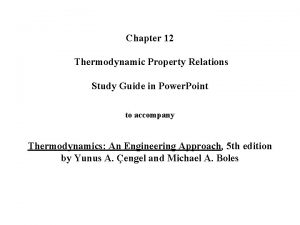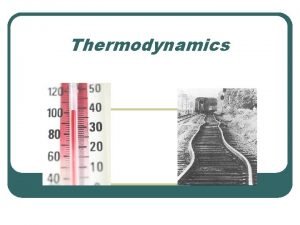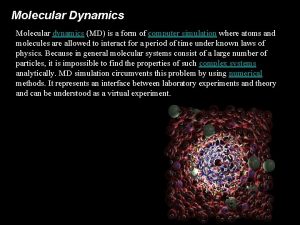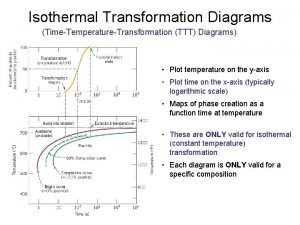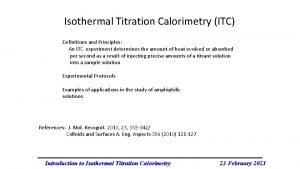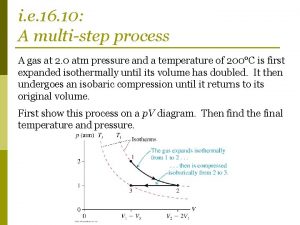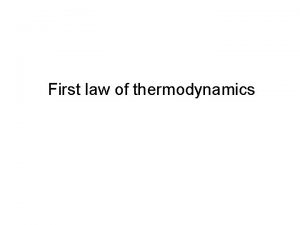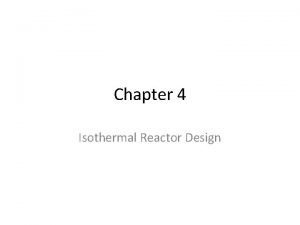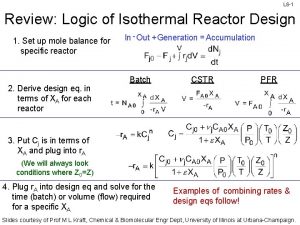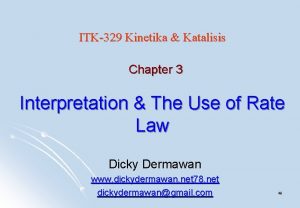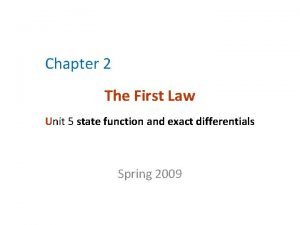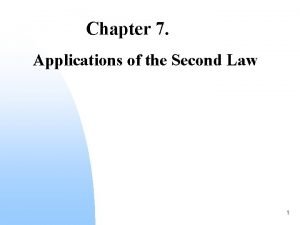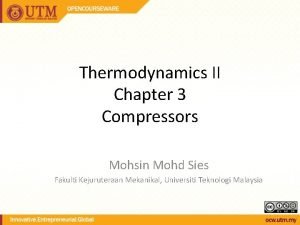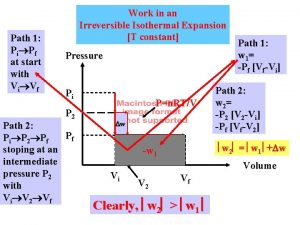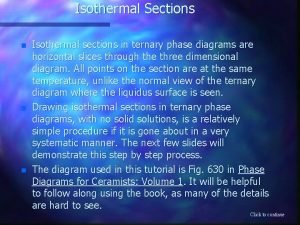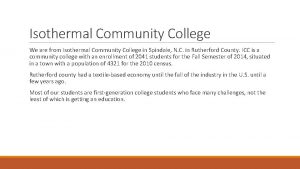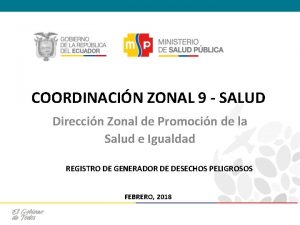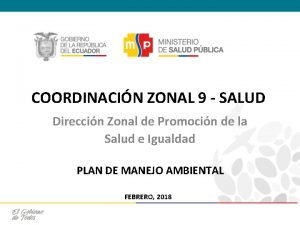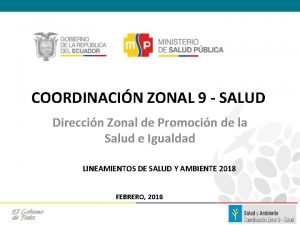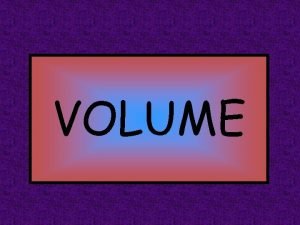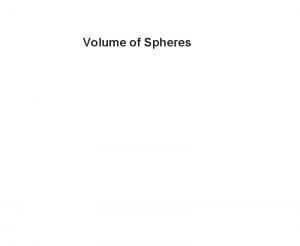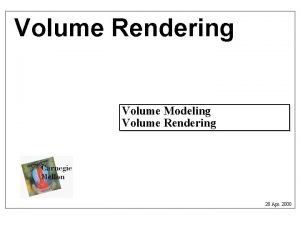Isothermal 2 D zonal air volume model Victor



















- Slides: 19

Isothermal 2 D zonal air volume model Victor Norrefeldt, Thierry Nouidui, Christoph van Treeck, Gunnar Grün Fraunhofer Institute for Building Physics – Valley, Germany Auf Wissen bauen © Fraunhofer IBP

Goal of zonal models n quick estimation of airflow patterns n quick estimation of local distributions of n heat n moisture n contaminants n… © Fraunhofer IBP

Idea of zonal modeling single-zone multi-zone zonal © Fraunhofer IBP CFD

Principles of zonal modeling n Subdivision of a room into zones (volumes) n Volume model: n Mass Conservation n Conservation of thermal energy n Other particle / contaminant conservations possible (moisture, CO 2, VOC, …) n Flow Model n Links two volume models n Calculates mass flow rate from pressure difference © Fraunhofer IBP

State of art Flow Volume 1 p 1 Volume 2 p 2 • Link many volumes → room • Cd approximately 0. 83 (Jiru and Haghighat, 2006, Wurtz et al. , 1999) © Fraunhofer IBP

Basic Zonal Model © Fraunhofer IBP

Basic Zonal Model Source Sink © Fraunhofer IBP

Application examples of Zonal Models n Prediction of temperature stratification in an experimental atrium in Kanagawa, Japan (Heiselberg et al. , 1998) n Calculation of refrigeration load of an ice-rink in Canada (Daoud et al. , 2007) n Modeling of a ventilated double-skin façade (Jiru et al. , 2008) © Fraunhofer IBP

Difficulty with state-of-the-art zonal model: Small pressure differences Inifinte gradient at zero n Current solution: Linearization (Boukhris et al. , 2009) n New solution: Calculate acceleration of air flow © Fraunhofer IBP

Difficulty with state-of-the-art zonal model: Dissipation of airflow velocity in volumes n Current solution: Jet- or plume correlations for regions with driving air flows (e. g. Wurtz et al. , 2006) n New solution: Air flow velocity as a property in volumes © Fraunhofer IBP

Difficulty with state-of-the-art zonal model: Number of zones influences the total pressure drop 4 pressure drops u 0 2 pressure drops u 0 n Current solution: None found n New solution: Size of a zone taken into account © Fraunhofer IBP

Formulation of the new zonal model Forces on flow path → acceleration of air flow Pressure Impluse Gravitation Viscous losses Use of apparent µ → losses Steady State © Fraunhofer IBP → acceleration = 0, velocity = constant

Application example: Nielsen-Room © Fraunhofer IBP

Zoning © Fraunhofer IBP

Comparison of results (µ = 0. 001) + Maximal velocity + Recirculation point - Recirculating air flow © Fraunhofer IBP

Comparison of results (µ = 0. 001) Maximal velocity + Recirculation point - Recirculating air flow © Fraunhofer IBP

Conclusion n New formulation of zonal models n Incorporated impulse conservation n Quick prediction of air flow pattern in rooms n Next steps n Extension to non-isothermal cases n Validation with own measurements © Fraunhofer IBP

References n Jiru, T. E. and Haghighat, F. , 2006. A new generation of zonal models. ASHRAE Transactions. Vol. 112. Part 2. pp 163 -174 n Heiselberg, P. , Murakami, S. , Roulet, C. -A. 1998. Ventilation of large spaces in buildings, Analysis and prediction techniques. IEA Annex 26 n Daoud, A. , Galanis, N. , Bellache, O. 2008. Calculation of refrigeration loads by convection, radiation and condensation in ice rinks using a transient 3 D zonal model. Applied Thermal Engineering. Vol. 28. pp 1782 -1790 n Jiru, E. , Haghighat, F. 2008. Modeling ventilated double skin façade—A zonal approach. Energy and Buildings. Vol. 40. pp 1567 -1576 n Wurtz, E. , Mora, L. , Inard, C. 2006. An equation-based simulation environment to investigate fast building simulation, Building and Environment. Vol. 40. pp 1571 -1583 n Boukhris, Y, Gharbi, L, and Ghrab-Morcos, N. 2009. Modeling coupled heat transfer and air flow in a partitioned building with a zonal model: application to the winter thermal comfort. Building Simulation. Vol. 2. pp 67 -74 n Nielsen, P. V. 1990. Specification of a two-dimensional test case. International Energy Agency. Energy conservation in buildings and community systems, Annex 20: Air flow patterns within buildings. © Fraunhofer IBP

Thank you for your attention Questions? in discussion or to victor. norrefeldt@ibp. fraunhofer. de © Fraunhofer IBP
 Thermodynamic property relations
Thermodynamic property relations Air higroskopis adalah
Air higroskopis adalah Isothermal expansion of ideal gas
Isothermal expansion of ideal gas Non isothermal reactor design problems
Non isothermal reactor design problems Isobaric isothermal ensemble
Isobaric isothermal ensemble Isothermal transformation definition
Isothermal transformation definition Itc calorimetry principle
Itc calorimetry principle Work done by isothermal process
Work done by isothermal process Internal energy in thermodynamics definition
Internal energy in thermodynamics definition Isothermal reactor design
Isothermal reactor design Damkohler number
Damkohler number In a homogeneous isothermal liquid polymerization 20
In a homogeneous isothermal liquid polymerization 20 Joule thomson coefficient
Joule thomson coefficient Entropy in adiabatic expansion
Entropy in adiabatic expansion Isothermal efficiency of reciprocating compressor
Isothermal efficiency of reciprocating compressor Dqrev
Dqrev Centrifugación zonal
Centrifugación zonal Cz integral nororiental
Cz integral nororiental Centro zonal santa rosa de cabal
Centro zonal santa rosa de cabal Centro zonal manizales 2
Centro zonal manizales 2
